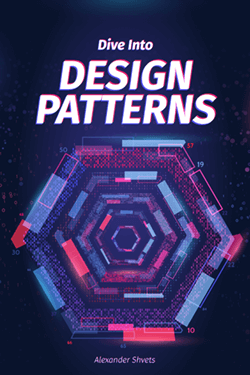Strategy Design Pattern in Java
Strategy design pattern
- Define the interface of an interchangeable family of algorithms
- Bury algorithm implementation details in derived classes
- Derived classes could be implemented using the Template Method pattern
- Clients of the algorithm couple themselves strictly to the interface
// 1. Define the interface of the algorithm
interface Strategy {
void solve();
}
// 2. Bury implementation
@SuppressWarnings("ALL")
abstract class StrategySolution implements Strategy {
// 3. Template Method
public void solve() {
start();
while (nextTry() && !isSolution()) {}
stop();
}
abstract void start();
abstract boolean nextTry();
abstract boolean isSolution();
abstract void stop();
}
class FOO extends StrategySolution {
private int state = 1;
protected void start() {
System.out.print("Start ");
}
protected void stop() {
System.out.println("Stop");
}
protected boolean nextTry() {
System.out.print("NextTry-" + state++ + " ");
return true;
}
protected boolean isSolution() {
System.out.print("IsSolution-" + (state == 3) + " ");
return (state == 3);
}
}
// 2. Bury implementation
abstract class StrategySearch implements Strategy {
// 3. Template Method
public void solve() {
while (true) {
preProcess();
if (search()) {
break;
}
postProcess();
}
}
abstract void preProcess();
abstract boolean search();
abstract void postProcess();
}
@SuppressWarnings("ALL")
class BAR extends StrategySearch {
private int state = 1;
protected void preProcess() {
System.out.print("PreProcess ");
}
protected void postProcess() {
System.out.print("PostProcess ");
}
protected boolean search() {
System.out.print("Search-" + state++ + " ");
return state == 3 ? true : false;
}
}
// 4. Clients couple strictly to the interface
public class StrategyDemo {
// client code here
private static void execute(Strategy strategy) {
strategy.solve();
}
public static void main( String[] args ) {
Strategy[] algorithms = {new FOO(), new BAR()};
for (Strategy algorithm : algorithms) {
execute(algorithm);
}
}
}
Output
start nextTry-1 isSolution-false nextTry-2 isSolution-true stop
preProcess search-1 postProcess preProcess search-2
Support our free website and own the eBook!
- 22 design patterns and 8 principles explained in depth
- 406 well-structured, easy to read, jargon-free pages
- 228 clear and helpful illustrations and diagrams
- An archive with code examples in 4 languages
- All devices supported: EPUB/MOBI/PDF formats
Learn more...
